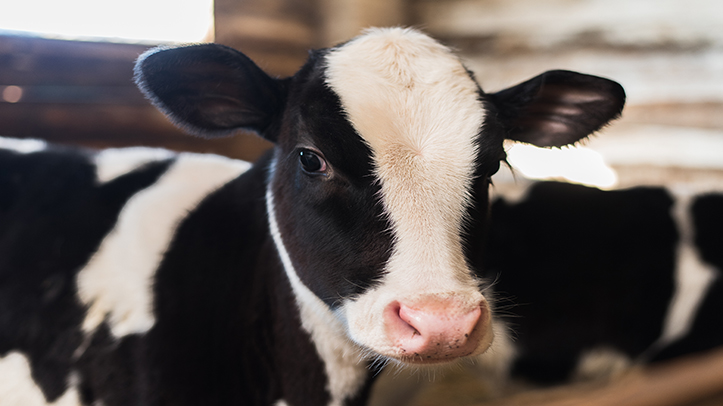MSD Animal Health UK said that dairy herd managers can improve the health and productivity of their adult cow population by ensuring post-weaned calves receive the same level of care and attention as their younger and older cohorts.
Kat Baxter-Smith, MSD Animal Health’s veterinary advisor, explained that not all calves in the 3-12 months age bracket receive the necessary attention they need to keep them free from key diseases such as pneumonia (otherwise known as Bovine Respiratory Disease (BRD)) and scour.
“When not diagnosed or treated quickly enough, both diseases can lead to short and long-term effects including a 6kg/month reduction in daily liveweight gains, a 525kg loss in first lactation yield, lower sales values for youngstock, and an increased susceptibility to other diseases later in life,” Kat said.
“And while pre-weaned calves typically receive plenty of care, there is a risk that the level of attention received might fall away after weaning – either due to a lack of time, the animals being housed off-site, or because of the assumption that they require less management.”
However, research shows that post-weaned calves are still very susceptible to performance restricting illnesses and must therefore be managed accordingly.
“Any disease that occurs in an animal’s first two years will reduce its ability to achieve its lifetime genetic potential,” Kat continued. “Effective youngstock disease prevention is therefore essential to safeguarding the herd’s future performance.”
In spite of this, only 1.6% of herds receive a routine youngstock-specific visit from the farm’s veterinary surgeon.
“That’s despite the fact that 78% of British dairy herds experience BRD and/or scour in their youngstock, with as many as 49% suffering calf mortality as a result of either or both of the diseases,” Kat added. “As a result, as many as 50% of dairy animals don’t achieve their full genomic potential.
Correctly caring for calves during the entirety of their first 12 months is therefore critical to protecting the farm’s investment in genomics, fertility management and calf-rearing.
Kat continued: “The easiest and most effective way of protecting youngstock from BRD and scour is via immunity-led disease prevention.
“This is best achieved through good colostrum management and by ensuring nutrition and the youngstock housing environment are as good as possible. Working with the farm’s vet to implement a robust vaccination programme to boost the animal’s natural defences should also be considered.”
In addition to a proactive vaccination protocol, the next most important step is to ensure youngstock are monitored frequently so that any symptoms of illness can be identified and treated before the disease gains a stronger foothold.
“Staffing issues, including a shortage of experienced staff and time constraints, can make it challenging to spot sick calves, especially if the herd’s post-weaned youngstock are located away from the main farm,” Kat said.
“Calves will use masking behaviours to hide some symptoms, meaning that by the time the first signs of illness have been observed (drooping ears, scours, inactivity), the affected animal will already be quite ill. In severe cases this could have a knock-on effect for the remainder of the animal’s life, or in the very worst cases result in mortality.”
Traditional disease detection practices including visual observations and body temperature monitoring are time-consuming and costly, and can be stressful for the animal.
“But there is another way thanks to the latest herd monitoring technologies,” Kat explained.
“The recently launched SenseHub Youngstock plan is the only system able to monitor dairy calves for the first 12 months of life, and can be used to assess the health and welfare of nipple-fed calves housed in single occupancy hutches from birth, or post-weaned calves housed in groups.
“By measuring activity, suckling, eating and rumination levels and trends, SenseHub Youngstock quickly and accurately identifies any animals with sub-clinical symptoms associated with deteriorating health. This allows for earlier intervention and enables the herd manager and vet to treat the affected animal sooner, resulting in reduced antibiotic usage, a faster return to full health, and a reduced impact on productivity later in the animal’s life.
“Using SenseHub to monitor the herd’s youngstock around the clock is also a more efficient use of time and labour resources, and is an ideal accompaniment to vaccination when thinking about disease prevention, detection and treatment.”


